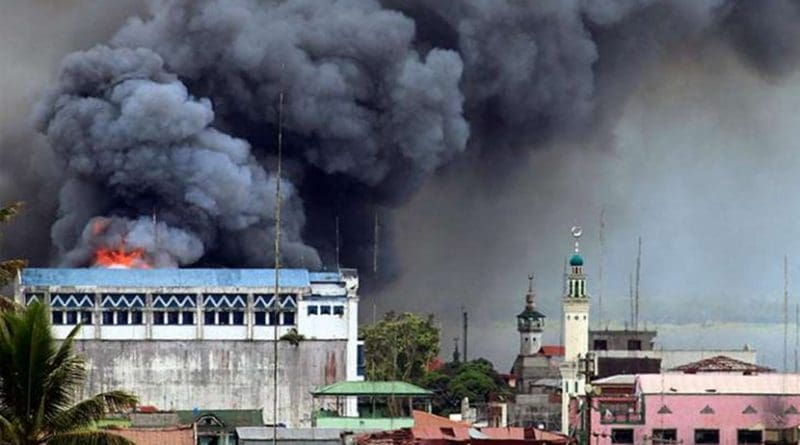Philippines: Marawi Rebuilding Could Take Four Years
By BenarNews
By Froilan Gallardo
Three months after Philippine troops drove militants linked to the Islamic State (IS) out of Marawi, rehabilitation of the southern Islamic city is slow because troops are clearing it of unexploded ordnance and homemade bombs, officials said Friday.
It could take two to three years to clear debris from areas destroyed during the five-month battle, while nearly half of Marawi’s 200,000 residents remain in evacuation sites or with relatives, said Eduardo del Rosario, who heads a civilian-military task force on rehabilitation. Total rehabilitation is expected to take nearly four years.
While more than 500 shelters have been set up to allow evacuees to return to their neighborhoods, ground zero remains off limits because troops are conducting massive recovery of unexploded ammunition or ordnance.
“This was where the heavy fighting between the government and the ISIS-Maute members happened. It covers an area of about 250 hectares (617 acres) with 24 villages and 11,000 families,” del Rosario said, using another name for IS.
“We’re trying to recover the bombs, including improvised explosive devices that were laid by the ISIS as booby traps,” he said. “So, if we allow them back in at this time, there is a huge possibility that they become victims of explosions.”
The military, he said, expected ordnance-clearing operations to be over by the first week of April.
Fighting erupted in May 2017 when members of an IS Filipino cell led by Isnilon Hapilon and supported by fighters from the local Maute gang tried to take over Marawi.
After five months of fighting, the military announced in October that it had killed Hapilon and his top lieutenants, including a Malaysian militant.
President Rodrigo Duterte declared the siege over and the final casualty count reached 1,200, the majority of whom were militants. Nearly 200 other militants are being sought and the government has not lifted military rule covering the southern Mindanao region.
Waivers
All residents are to be given one week to visit the area to check on their homes and buildings or to get appliances and personal items that could be recovered.
“Remember, the buildings and homes were 90 percent to 100 percent destroyed,” del Rosario said. “The total debris estimate alone was about 3 million tons. So just to clear the debris, that will take two to three years.”
Private developers being contracted by the government had promised that in about a year, basic facilities such as water, power and telecommunications would be restored, he said. Total rehabilitation could be complete by the end of 2021.
Those entering the area would be asked to sign a waiver, because the government would not be responsible in case “something could happen that would danger their lives,” he added.
A 500-pound bomb, for example, has a potential kill radius of at least 1.3 km (0.8 miles), del Rosario noted.
Addressing growing concerns of the local Muslim ulamas that a continued delay on the rehabilitation of Marawi could lead to radicalization in evacuation camps, del Rosario said he was conducting consultations with religious leaders.
“There are speculations, skepticism why they are not being allowed back,” he acknowledged.

